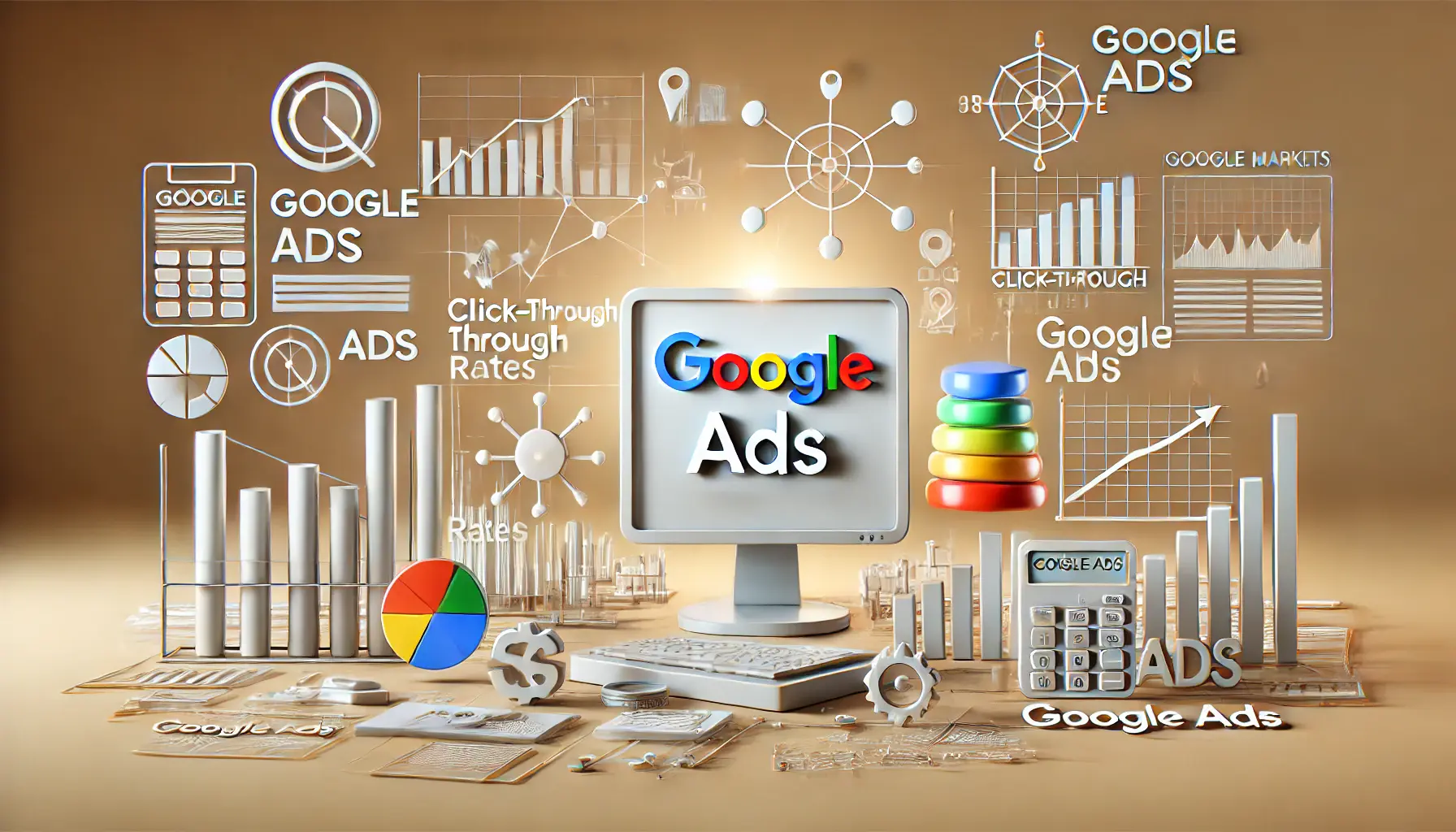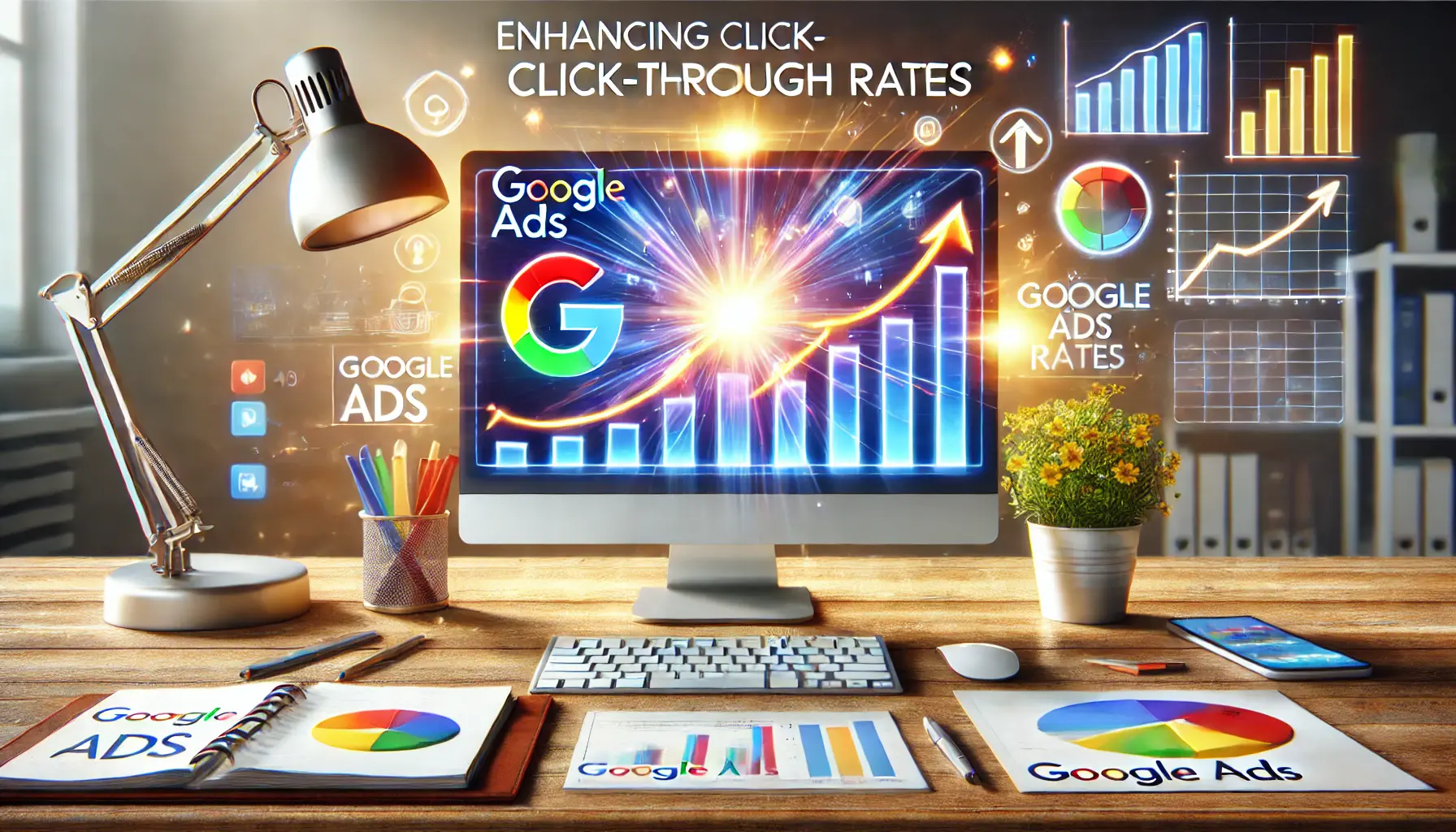In the fast-moving world of digital marketing, optimizing click-through rateThe percentage of people who click on an ad after seeing it. (CTR) is indispensable for success with display advertisingA form of online advertising that uses images, banners, or videos. campaigns.
While display ads are powerful tools for engaging audiences with their visuals and messages, they must inspire clicks to have a real impact.
Below are some of the best practices that can help increase your CTR and make full use of display ads on Google Ads.
Whether you’re a seasoned marketer or just starting out, these tips can help you stand out, engage your audience, and drive measurable results.
First, let’s dive into understanding click-through rate, its role in display ads, and why it is crucial for your campaign’s overall performance.
- Understanding Click-Through Rate (CTR) in Display Ads
- Designing Aesthetically Appealing Display Ads
- Crafting High-Impact Ad Copy to Increase CTR
- Targeted Audience Segmentation to Increase CTR
- A/B Testing to Optimize Ad Performance
- Display Ad CTR Improvement: Final Words
- CTR in Display Ads: Frequently Asked Questions
Understanding Click-Through Rate (CTR) in Display Ads
Click-through rate (CTR) is calculated by dividing the number of clicks an ad receives by the number of impressionsThe number of times an ad is shown on a webpage., then multiplying the result by 100 to get a percentage.
A high CTR means your ad is effectively capturing viewers’ attention and encouraging clicks, which is essential for driving traffic and achieving success in advertising.
CTR is more than just a metric; it’s a direct barometer of how well your ads resonate with your audience.
A high CTR signals to Google and other advertising platforms that the ad is relevant, which often leads to better ad placements and lower costs.
Conversely, a low CTR suggests that adjustments may be needed to enhance the ad’s appeal.
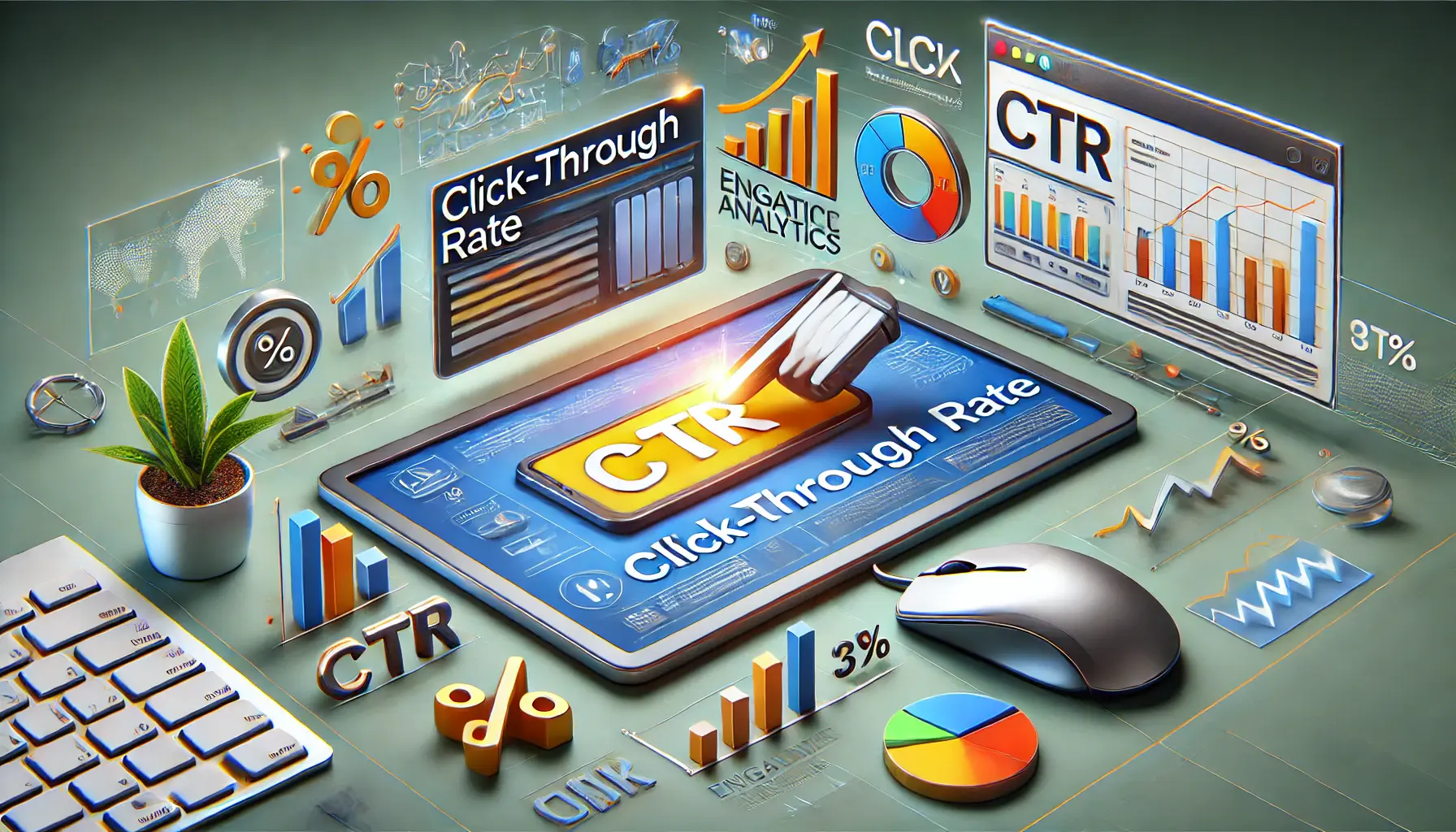
Illustration of Click-Through Rate (CTR) in digital marketing analytics
What is Click-Through Rate (CTR)?
Click-through rate is calculated using the formula:
CTR = (Number of Clicks / Number of Impressions) * 100
For example, if your ad received 10 clicks from 1,000 impressions, your CTR would be 1%.
This metric is crucial because it reflects the ad’s ability to capture attention and prompt action, making it a primary focus for optimizing campaign performance.
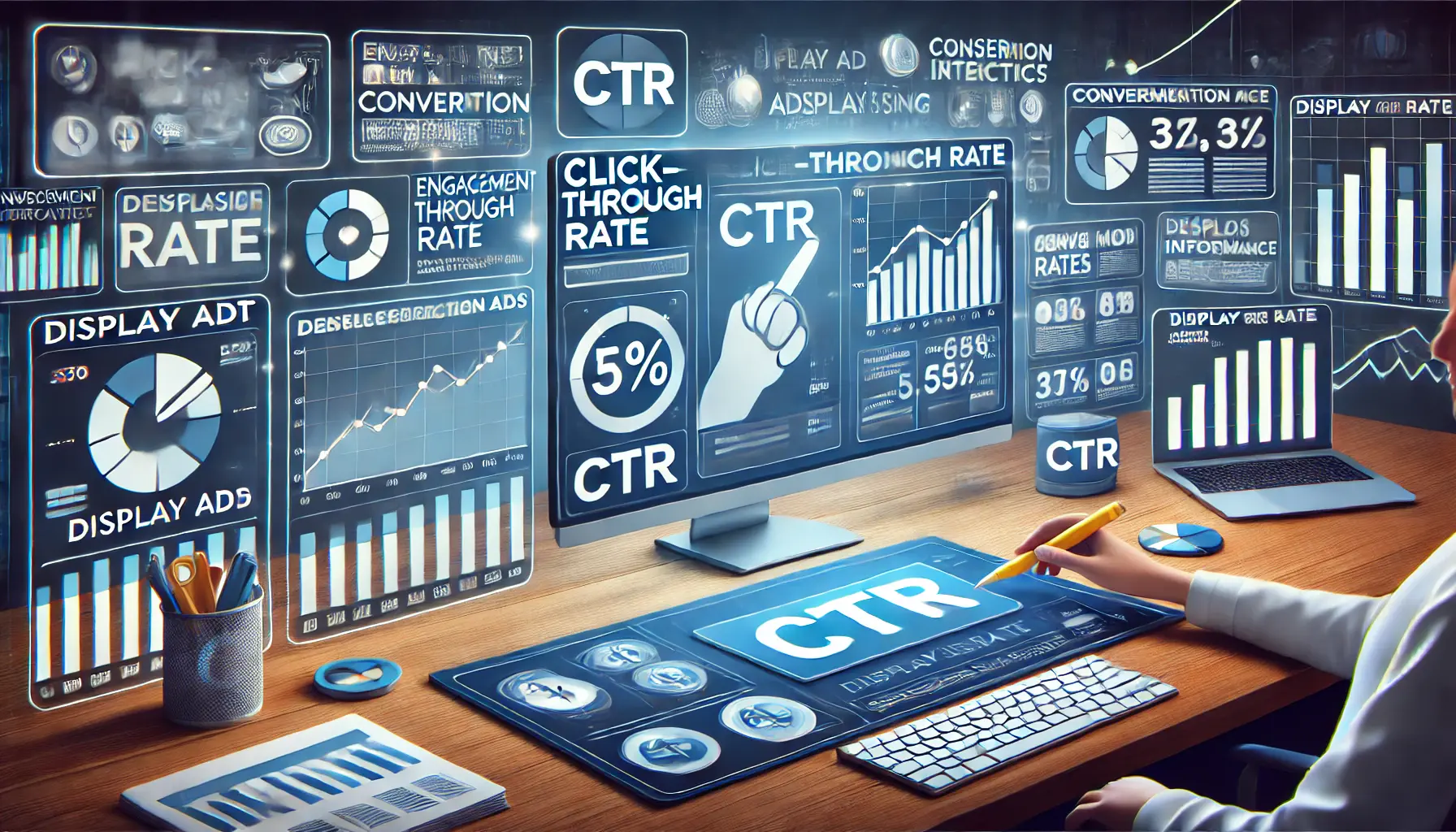
The importance of Click-Through Rate (CTR) in optimizing display advertising effectiveness
Importance of CTR in Display Advertising
CTR plays a pivotal role in the success of display ads.
A high CTR indicates a well-targeted ad that resonates with the audience, resulting in more clicks and potential conversions.
But CTR affects more than just clicks; it influences other key aspects of your ad campaigns, such as:
- Quality Score: Platforms like Google Ads factor CTR into your Quality Score, which can impact your ad’s ranking and cost per click (CPC).
- Ad Relevance: A strong CTR suggests that your ad aligns with user interests, leading to better engagement and conversions.
- Cost Efficiency: A higher CTR can lower your CPC, helping you get more value from your advertising budget.
Focusing on CTR enhances ad performance and contributes to better overall results by optimizing both visibility and cost-effectiveness in the long run.
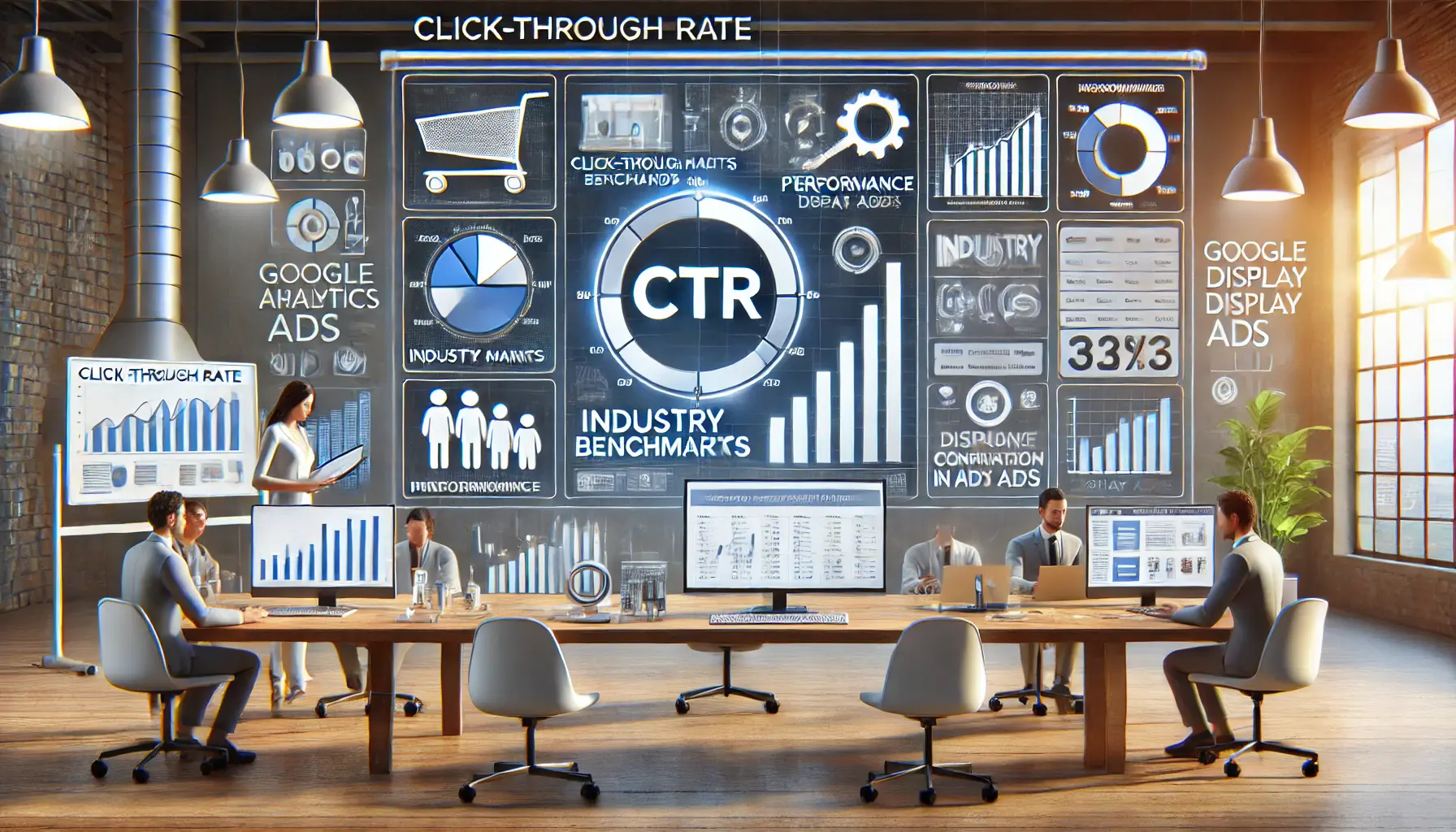
CTR benchmarks and performance metrics in Google Display Ads
CTR Benchmarks in Google Display Ads
Understanding CTR benchmarks provides valuable context for assessing your ad’s performance.
While benchmarks vary by industry, display ads typically see an average CTR between 0.1% and 0.5%.
However, this can vary based on factors such as target audience, ad design, and competitive landscape.
Monitoring your CTR against industry standards can help identify areas for improvement and refine your strategy over time.
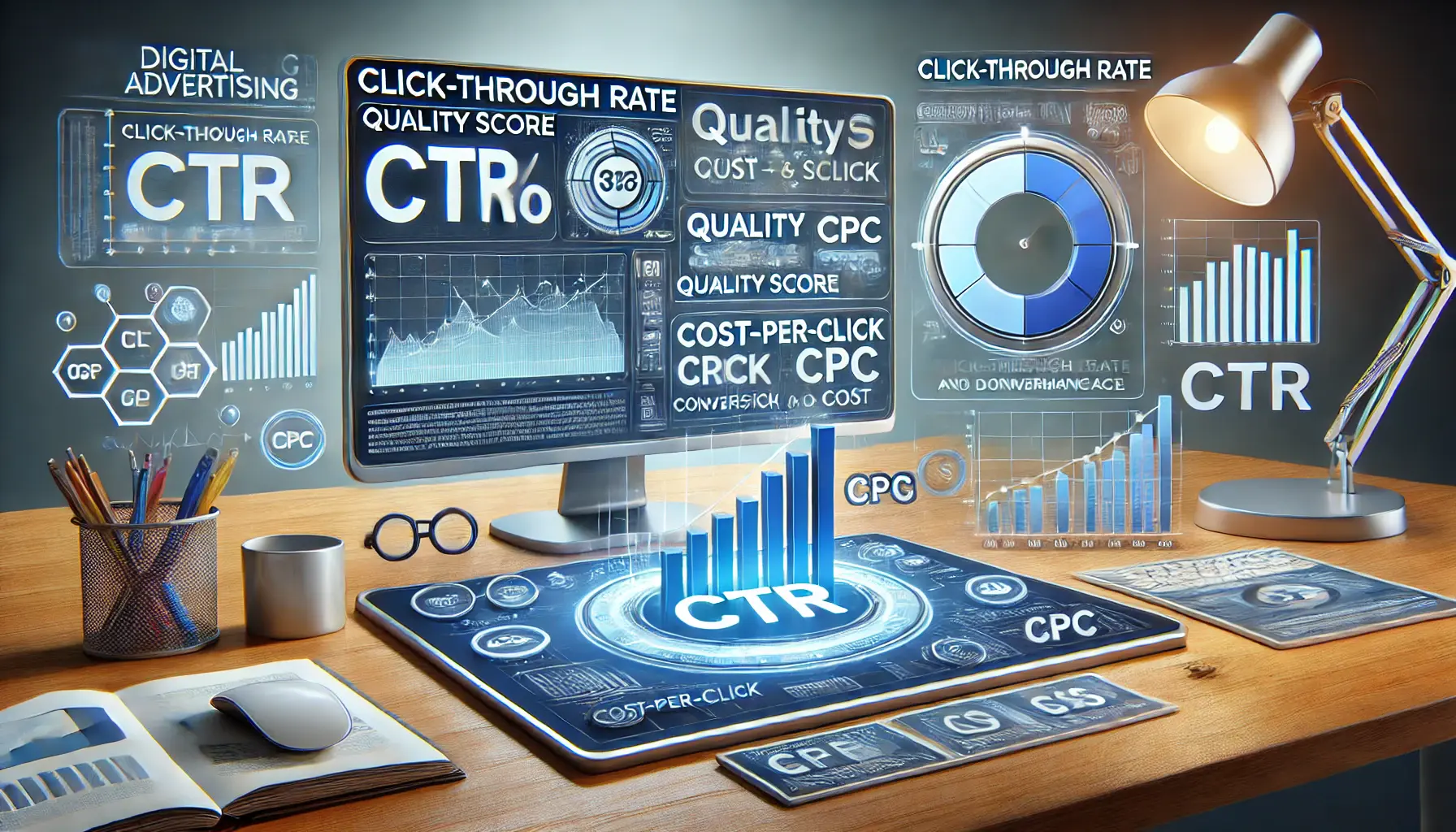
The impact of Click-Through Rate (CTR) on ad performance and advertising costs
How CTR Impacts Ad Performance and Cost
A strong CTR not only boosts your ad’s performance but can also lead to lower advertising costs.
When your CTR is high, it signals to Google that your ad is relevant, which can improve your Quality ScoreA Google Ads metric that affects ad placement and cost..
A better Quality Score can result in lower CPCs, allowing you to get more clicks within your budget.
In other words, focusing on CTR can create a snowball effect where better positioning leads to cost efficiency, benefiting your campaign in multiple ways.
Understanding and optimizing CTR can enhance ad performance and reduce costs, creating a strong foundation for digital ad success.

Creative elements in designing aesthetically appealing display ads
Designing Aesthetically Appealing Display Ads
A creatively designed display ad is essential for capturing user attention and boosting click-through rate (CTR).
Most display ads appear in a noisy digital environment, so making your ad stand out from the surrounding messages is crucial to encouraging people to click.
Designing visuals that resonate with your target audience can make all the difference between a successful campaign and a mediocre one.
Let’s explore some of the key considerations in display ad design to help raise CTR.
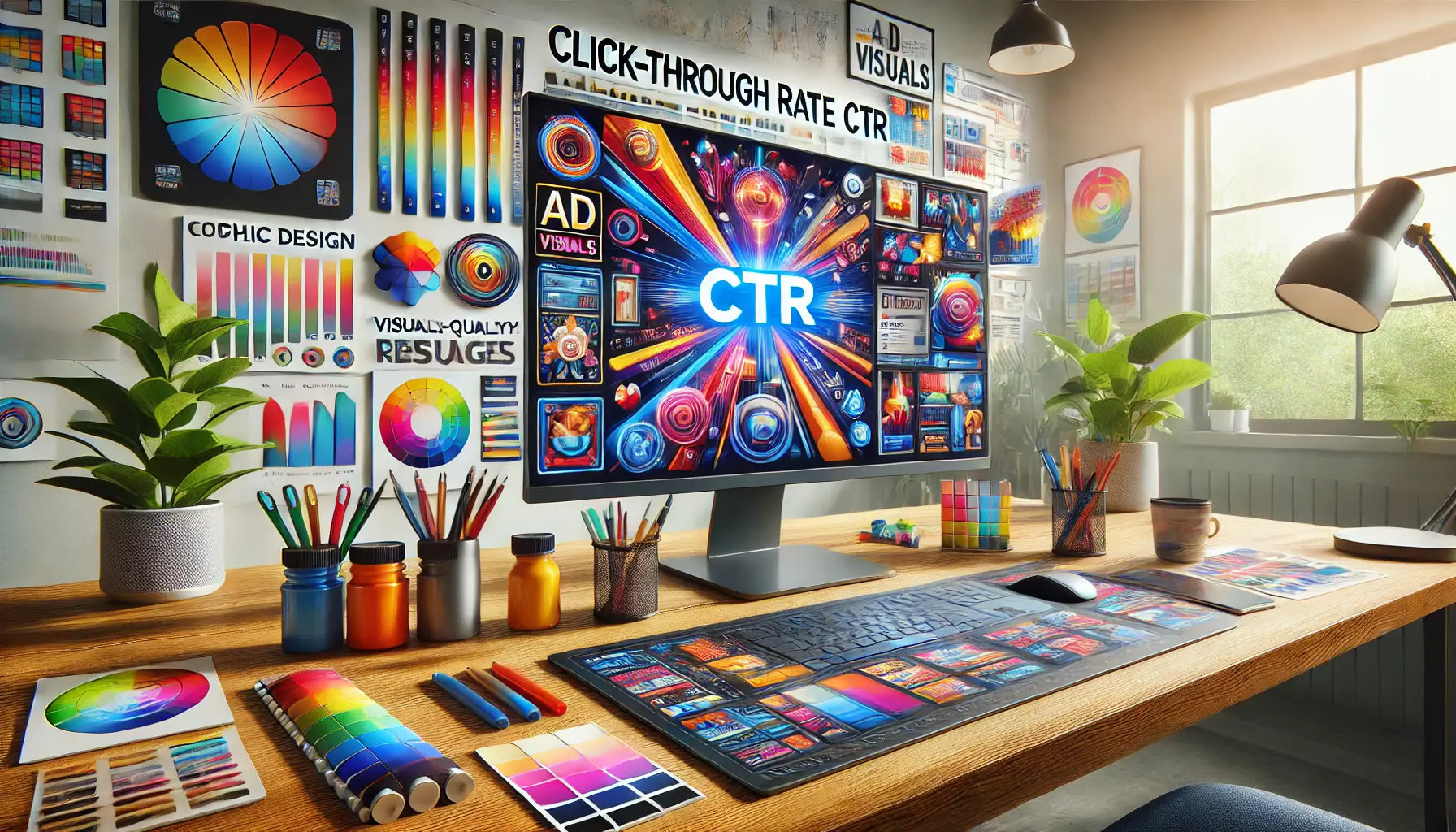
The influence of ad visuals on Click-Through Rate (CTR) in digital marketing
The Role of Ad Visuals in CTR
Advertisement visuals play a vital role in determining an ad’s performance.
A good ad is visually appealing and can capture user attention instantly through imagery, color, and graphics.
But it doesn’t stop there; the visuals must also portray the brand’s message and resonate with the target audience.
People are more likely to click on ads with relevant visuals, as these leave a lasting impression.
Think about how your brand’s personality and message can be represented visually.
Consistent use of brand colors, typography, and imagery creates a cohesive look that helps build recognition and trust, which ultimately increases CTR.
For instance, bold and bright colors like red or yellow may convey urgency, while blues and greens evoke trust and calmness.

Using colors and fonts effectively in display ad design
Effective Use of Colors and Fonts
Colors and fonts are essential tools in designing effective display ads.
Colors can evoke emotions and help communicate your message, so select colors that resonate with your audience.
For instance, bold colors can create a sense of urgency, while calming colors like blue can instill trust.
When it comes to fonts, ensure they are legible and consistent with your brand’s tone.
Serif fonts are traditional and work well for trusted brands, while sans-serif fonts give a modern, clean look.
Avoid using too many fonts or overly decorative text, as this can make the ad look cluttered and hard to read.

Designing ad layouts with organized elements and clear focal points
Creating Compelling Ad Layouts
An organized layout guides the viewer’s eye through the message, providing the best way to convey the purpose of your ad.
A clear focal point—like a product image or strong headline—should draw the viewer’s attention.
The call-to-action (CTA) should also stand out to encourage clicks.
Keeping the layout uncluttered and using whitespace helps make each element more distinguishable.
Consider using hierarchy in your layout, where the most critical elements, such as the headline or CTA, are given more visual weight to attract attention.
High-quality images or graphics that relate directly to the message can strengthen your ad’s appeal and contribute to a higher CTR.

Creating responsive ad designs for optimal mobile viewing
Designing Ads for Mobile Responsiveness
With a significant portion of ad views coming from mobile devices, designing ads that look great on smaller screens is essential.
Mobile-responsive ads automatically adjust to different screen sizes, ensuring they remain clear, legible, and visually appealing across devices.
Poorly optimized mobile ads can result in missed clicks and wasted impressions.
When creating mobile-friendly ads, use large, readable fonts, avoid overly complex visuals, and keep the CTA easy to find.
Testing your ads across various devices ensures that all visual elements load correctly, helping you achieve a higher CTR on mobile platforms.
Effective ad design is key in drawing viewer attention and increasing CTR.
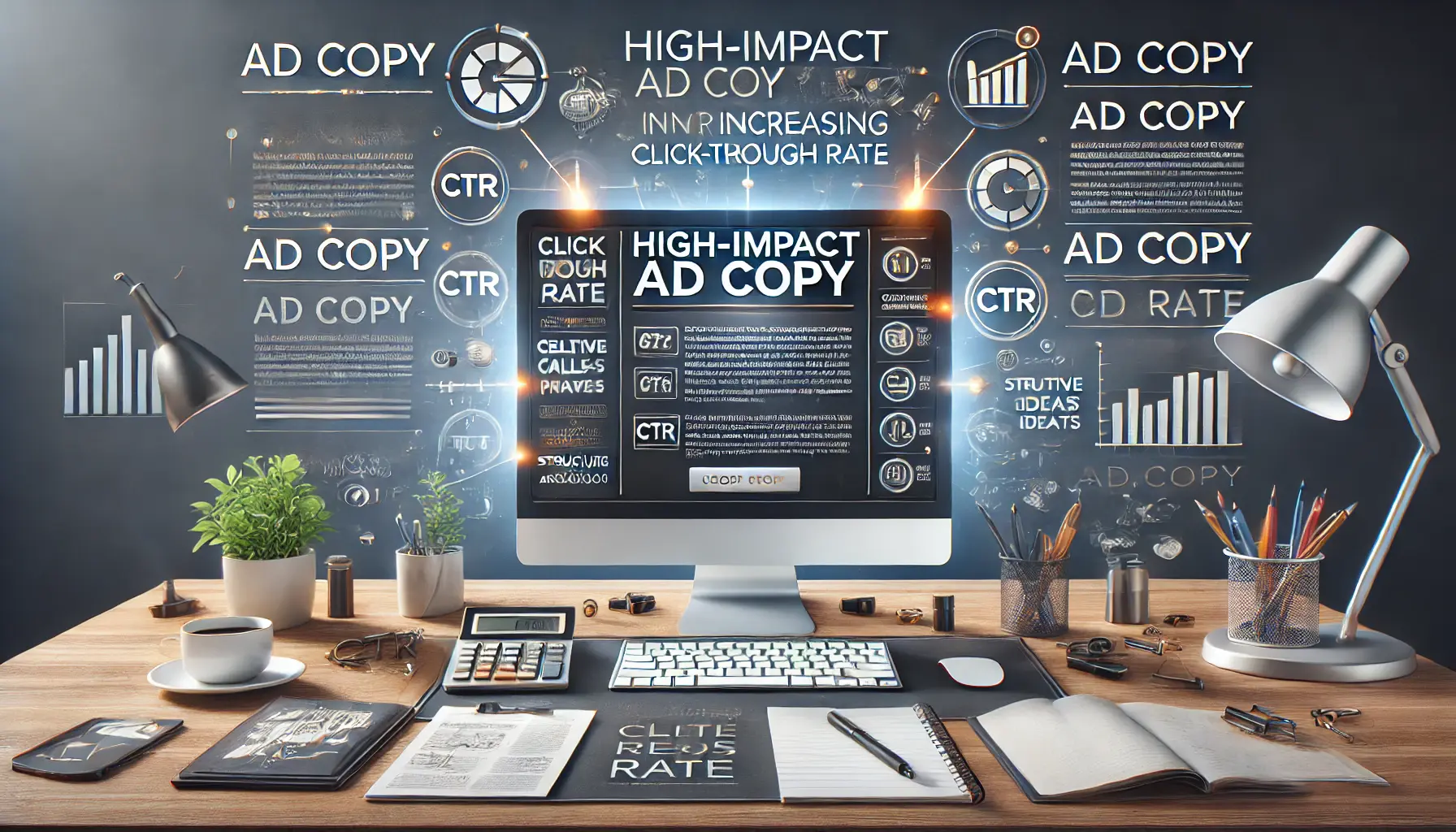
Writing high-impact ad copy to boost Click-Through Rate (CTR)
Crafting High-Impact Ad Copy to Increase CTR
Ad copies are just as important in achieving a high click-through rate (CTR) as visuals.
Well-written ad copy captures user attention, communicates the message concisely, and encourages action.
Effective ad copy strikes the right balance among clarity, persuasiveness, and relevance.
Here are some key tips to help craft ad copy that resonates with your audience and boosts your CTR.

Crafting clear and concise headlines to capture attention
Writing Clear and Concise Headlines
Your headline is often the first thing users see, so it needs to be clear, direct, and attention-grabbing.
A great headline captures attention immediately and conveys what the ad is about.
Keep the wording short, avoid vagueness, and use expressions that relate directly to the needs and interests of your audience.
- Highlight the benefit: For example, “Save 20% on Your First Order” is a clear, compelling incentive.
- Ask a question: Headlines with questions engage users and pique their curiosity, such as “Looking for Reliable IT Solutions?”
- Use numbers or statistics: Numbers can add credibility and catch attention, like “5 Easy Tips to Boost Productivity.”

Implementing strong calls-to-action (CTAs) in digital ads
Using Strong Calls-to-Action (CTAs)
A clear and persuasive call-to-action (CTA) is essential for improving CTR.
The CTA should create a sense of urgency and encourage users to click, sign up, or purchase.
Use actionable language that guides users on exactly what to do.
- Be direct: Words like “Get Started,” “Shop Now,” or “Sign Up Today” create a sense of urgency and clarity.
- Incorporate benefits: CTAs like “Discover Your Perfect Plan” or “Unlock Exclusive Discounts” emphasize what users gain by clicking.
- Limit distractions: Keep the CTA short and straightforward, avoiding any clutter that could detract from its impact.
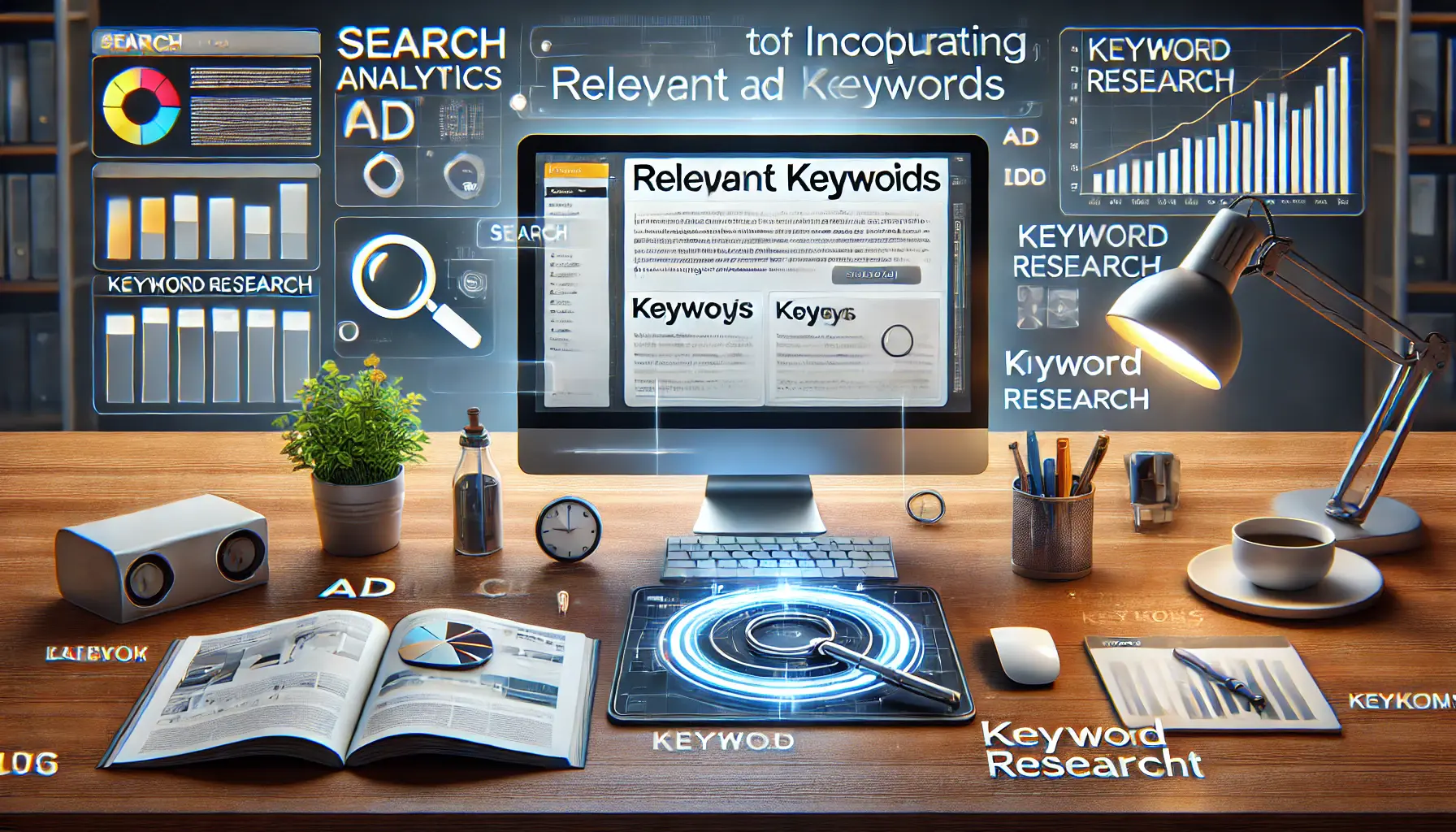
Incorporating relevant keywords into digital ad copy for targeted campaigns
Incorporating Relevant Keywords
Using keywords in your ad copy helps ensure your ad appears to the right audience, enhancing its relevance and CTR.
Keywords should be integrated naturally and align with what users are searching for.
Conduct keyword research to identify terms frequently searched by your target audience.
Inject these keywords naturally into your headlines and body copy to improve ad relevance and visibility.

Avoiding common copy mistakes in digital ad writing
Avoiding Common Copy Mistakes
Avoiding common pitfalls in ad copy can make it more effective and credible:
- Avoid information overload: Keep the copy concise, as too much text can overwhelm users and reduce engagement.
- Be less salesy: Users prefer ads that feel helpful, not overly promotional. Focus on providing value.
- Use clear language: Avoid jargon or vague phrases that may confuse users. Clear, direct language performs best.
Focus on these elements and tailor your ad copy to your audience’s needs to create high-impact, persuasive messages that encourage users to click and engage with your brand.
Strong ad copy captures user attention, communicates the message concisely, and encourages action.

Targeted audience segmentation to improve Click-Through Rate (CTR) in digital ads
Targeted Audience Segmentation to Increase CTR
Understanding and reaching the right audience is crucial to achieving the maximum click-through rate (CTR) of your display ads.
By applying targeted audience segmentation, you can ensure your ads appear in the right spaces, making them more relevant and appealing.
This approach not only enhances engagement but also improves the efficiency and cost-effectiveness of your advertising efforts.
Let’s explore how to effectively segment your audience to increase CTR.

Understanding and utilizing audience segmentation for effective ad targeting
Understanding Audience Segmentation
Audience segmentation is the process of dividing your broader audience into smaller, more defined groups based on shared characteristics.
These segments can be defined by demographics, interests, behaviors, and more.
By understanding the unique needs and preferences of each segment, you can create personalized ad content that resonates more deeply with viewers, leading to higher CTR.
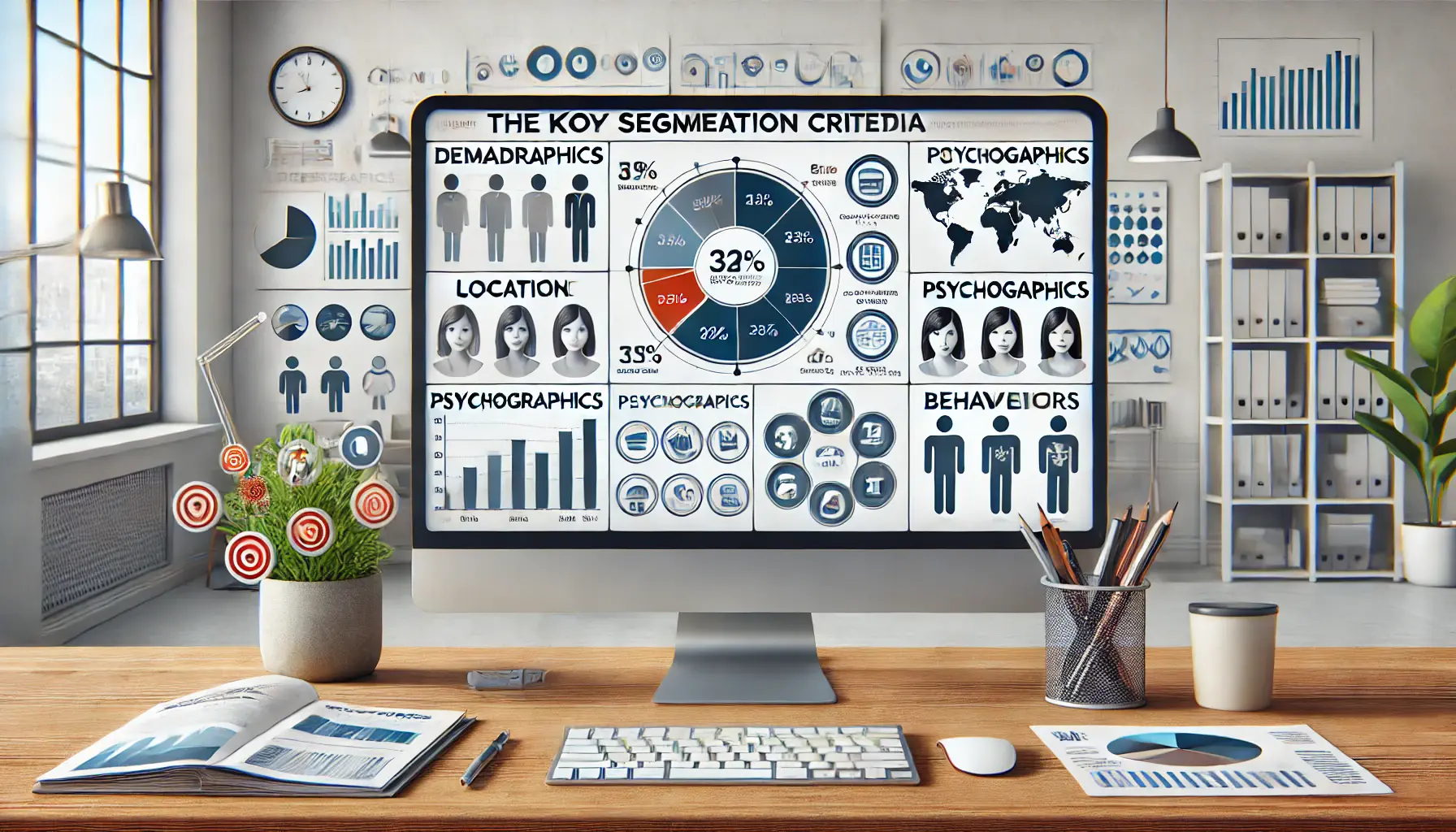
Applying key segmentation criteria for targeted digital ad campaigns
Key Segmentation Criteria
To effectively segment your audience, consider the following criteria:
- Demographics: Age, gender, income level, education, and occupation.
- Geographics: Location, climate, and regional preferences.
- Psychographics: Lifestyle, values, interests, and opinions.
- Behavioral: Purchase history, brand loyalty, and product usage.
By analyzing these factors, you can identify distinct segments within your audience and tailor your ad campaigns accordingly.

Utilizing data to refine audience segmentation for targeted digital ads
Utilizing Data for Effective Segmentation
Data is the cornerstone of effective audience segmentation.
Use analytics tools for insights into audience behaviors and preferences.
Tools like Google AnalyticsA tool by Google for tracking and analyzing website traffic. provide essential data on user demographics, interests, and online behaviors.
Additionally, customer relationship management (CRMCustomer Relationship Management, a system for managing interactions with customers.) systems can offer valuable information on purchase history and engagement patterns.
By aggregating data from these sources, you can create comprehensive audience profiles that guide segmentation strategies and drive highly targeted and effective ad campaigns.

Creating personalized ad content based on audience data and preferences
Creating Personalized Ad Content
Personalization involves tailoring your ad’s message, visuals, and offers to align with the specific interests and needs of each target segment.
Personalized ads are more likely to capture attention and encourage clicks, leading to improved CTR.
For instance, if one segment consists of young professionals interested in fitness, crafting an ad that shows how your product supports an active lifestyle will be far more effective than a generic message.

Testing and refining audience segmentation strategies for optimized ad targeting
Testing and Refining Your Segmentation Strategy
Audience segmentation is a cyclical process that requires regular testing and analysis.
Continuously test and analyze your segmented ad campaigns’ performance to understand what works.
A/B testing different creative variations within each segment can reveal the messaging and imagery that resonates best with audiences.
Use these insights to refine your segmentation strategy continually.
This iterative approach ensures that your ads remain relevant and effective, leading to sustained improvements in CTR over time.
Effective audience segmentation drives personalized and engaging display ads that resonate better with audiences, resulting in higher engagement and improved CTR.
Audience segmentation allows for more personalized and effective ad content, which enhances engagement and CTR.

A/B testing process to optimize digital ad performance
A/B Testing to Optimize Ad Performance
In the dynamic world of digital marketing, continuous optimization is essential to improve the click-through rate (CTR) of your display ads.
A/B testing is a highly effective methodology for refining ad campaigns by comparing two different versions of an ad to determine which works best.
This data-driven approach allows for decisions that consistently enhance overall ad effectiveness.

Illustrating the A/B testing process for optimizing ad performance
A/B Testing Explained
A/B testing, also known as split testing, is a process where two different variations of an ad—Version A and Version B—are shown to separate segments of your audience.
By analyzing which version yields a higher CTR, you can identify the elements that resonate most with your audience.
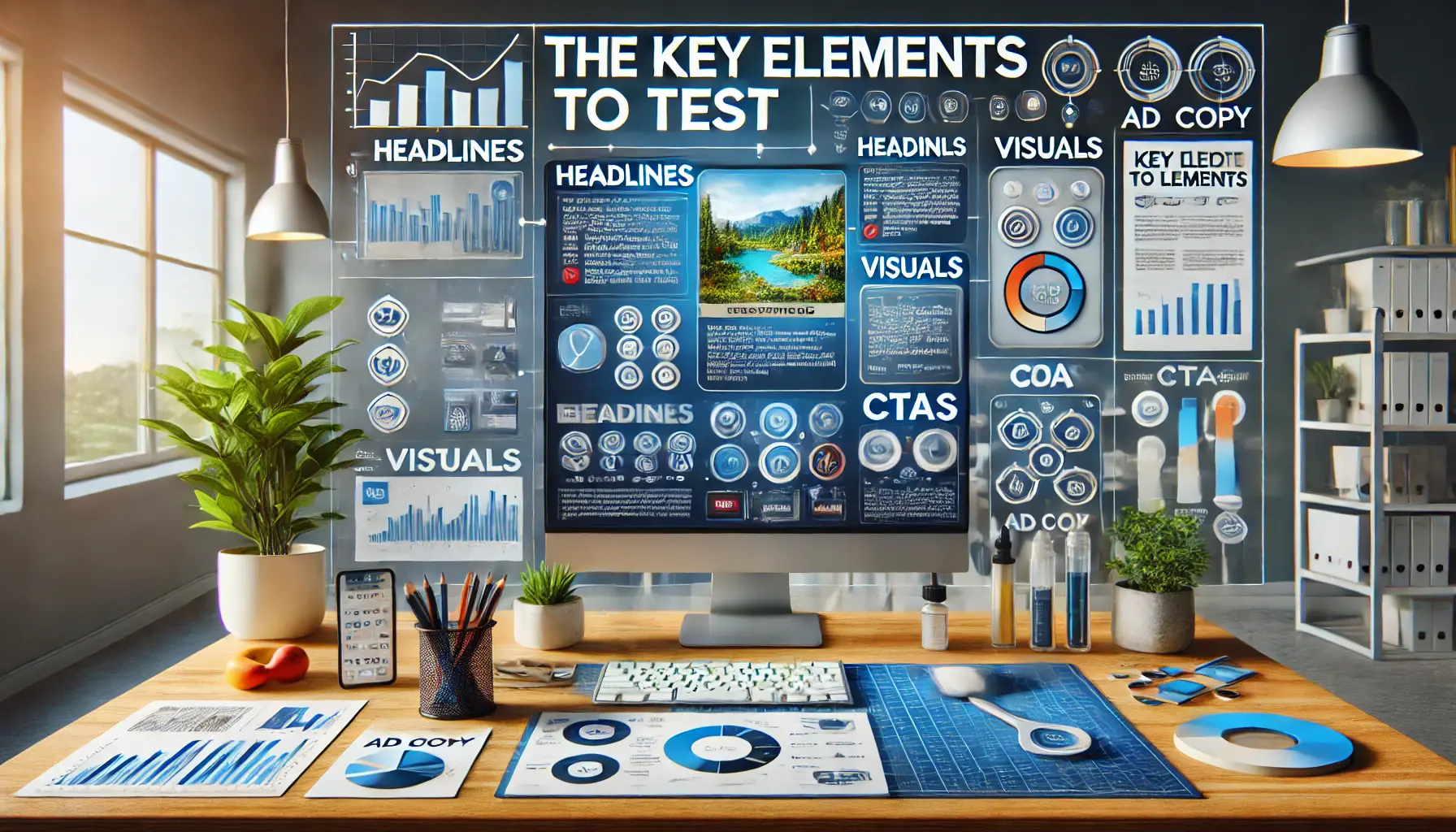
Testing key ad elements such as headlines, visuals, and CTAs for optimization
Key Elements to Test
When conducting A/B tests, consider experimenting with the following components:
- Headlines: Test different wording, lengths, and tones to see which captures more attention.
- Visuals: Compare images, colors, and layouts to determine what appeals most to your audience.
- Call-to-Action (CTA): Experiment with various phrases, button designs, and placements to find the most compelling combination.
- Ad Copy: Vary the messaging style, length, and content to see what drives higher engagement.
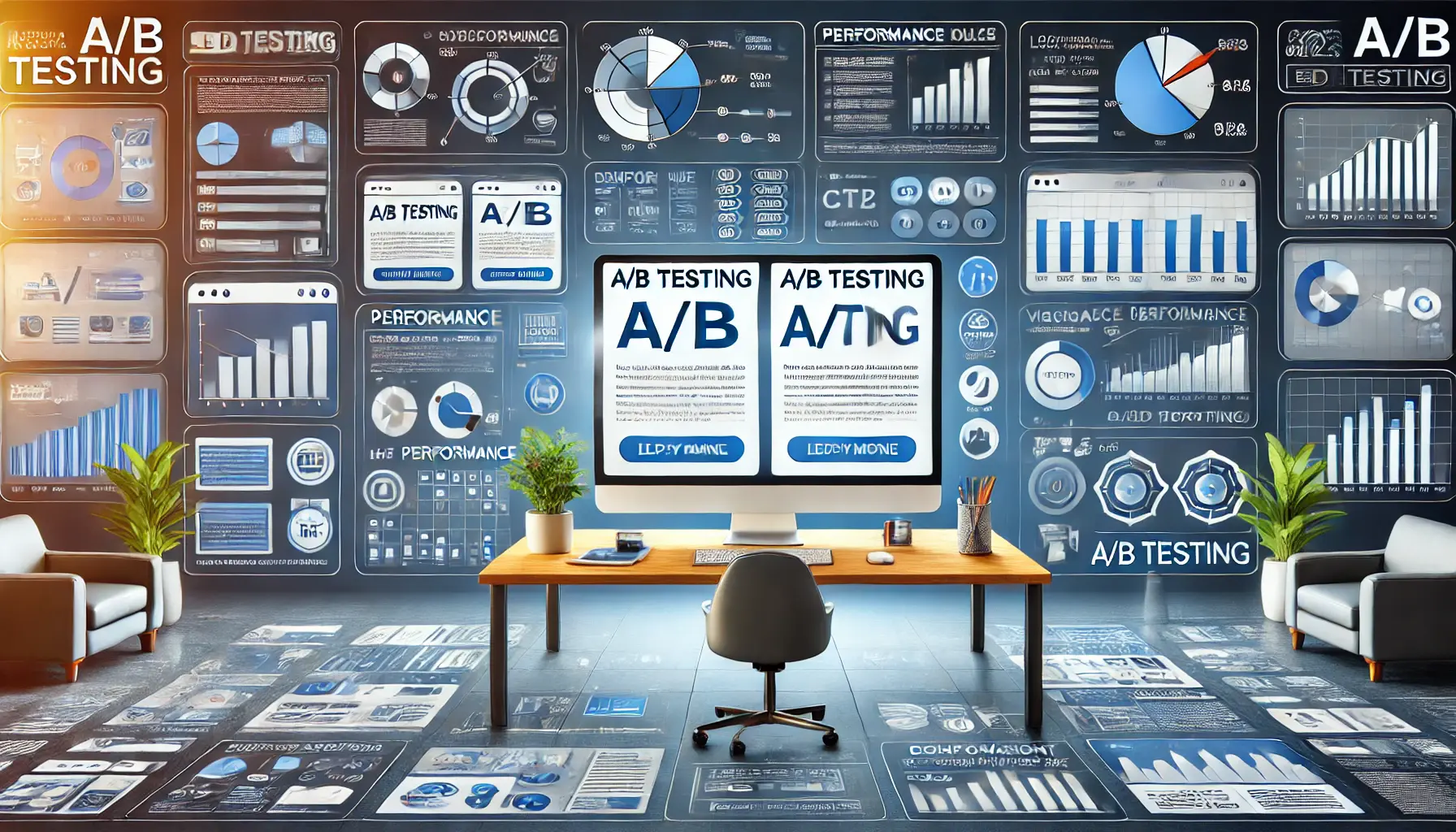
Implementing A/B testing to optimize digital ad performance
Implementing A/B Testing
To effectively implement A/B testingA method of comparing two ad versions to determine the most effective one., follow these steps:
- Define Your Objective: Clearly state what you aim to achieve, such as increasing CTR or conversions.
- Create Variations: Develop two distinct versions of the ad, differing in one specific element.
- Split Your Audience: Randomly divide your target audience into two groups to view each ad version.
- Run the Test: Launch both ad versions simultaneously to ensure consistent conditions.
- Analyze Results: After a sufficient period, compare the performance metrics to identify the superior version.

Best practices for A/B testing to optimize digital ad performance
Best Practices for A/B Testing
To maximize the effectiveness of your A/B tests:
- Test One Element at a Time: Isolate variables to accurately determine their impact on performance.
- Ensure Statistical Significance: Run tests long enough to gather meaningful data, avoiding premature conclusions.
- Use Reliable Analytics Tools: Utilize platforms like Google Analytics to track and analyze results accurately.
- Document and Learn: Keep detailed records of tests and outcomes to inform future strategies.
By systematically applying A/B testing, you can make informed adjustments to your display ads, leading to continuous improvement in CTR and overall campaign success.
A/B testing is a key method for identifying what works best with your audience, leading to improved CTR.

Final steps in improving Click-Through Rate (CTR) for display ads
Display Ad CTR Improvement: Final Words
Improving click-through rate (CTR) forms the backbone of any successful display ad campaign.
Each component—whether it’s ad creatives, targeted audience segmentation, engaging ad copy, or continuous optimization—plays a significant role in capturing viewers’ attention, engaging them, and driving actionable results.
By integrating these elements through a strategic approach, you can build a well-rounded campaign that maximizes CTR and enhances both effectiveness and cost efficiency.

Key takeaways for boosting Click-Through Rate (CTR) in digital advertising
Key Takeaways to Boost CTR
Here’s a quick summary of the main ways to boost CTR in your display ads:
- Create Visually Appealing Ads: Use visually engaging images, colors, and fonts that align with your brand and resonate with your target audience.
- Craft High-Impact Ad Copy: Develop clear, concise headlines and compelling calls-to-action (CTAs) that speak directly to the audience’s needs and prompt immediate action.
- Audience Segmentation: Segment audiences into groups based on demographics, behaviors, and interests to tailor your ad content for greater relevance.
- Run A/B Testing: Continuously test different ad elements to identify what works best for your audience, refining your ads for optimal performance.

Achieving long-term success with display ad campaigns through optimization and strategic planning
Achieving Long-Term Success with Display Ads
Successfully increasing CTR is an ongoing journey that requires creativity, consistency, and a data-driven approach.
Make it a habit to test, optimize, and adjust your campaigns based on audience preferences and emerging trends.
By investing in personalized content through audience segmentation and A/B testing, you gain insights into what resonates and performs best.
Following these best practices and making incremental improvements over time will significantly enhance the performance of your display ads.
Remember, a high CTR is not just about capturing clicks—it’s about building brand trust, driving meaningful interactions, and ultimately achieving a positive return on investment (ROI) in your advertising efforts.

Final strategies for maximizing Click-Through Rate (CTR) in digital advertising
Final Tip for Maximizing CTR
As you refine your approach, keep your audience at the center of every decision.
Display ads that connect with viewers personally and offer clear value are the ones most likely to succeed.
By consistently focusing on relevance and quality, you’ll create ads that not only boost CTR but also strengthen brand loyalty and foster long-term engagement.
Improving click-through rate in display ads is a powerful way to elevate your brand’s online presence and drive business growth.
Applying the strategies outlined in this article will help you create display ad campaigns that captivate, convert, and lead your marketing efforts to success.
Increasing CTR requires continuous optimization and a strategic approach across all ad components.

Frequently asked questions about Click-Through Rate (CTR) in display ads
Your campaigns can be managed by an agency specialized in Google Ads, check out our service page.
CTR in Display Ads: Frequently Asked Questions
Optimizing advertisement performance requires a strong click-through rate (CTR).
Below are some frequently asked questions and concise answers to help you make informed adjustments to your advertising strategies.
CTR is the percentage of users who click on an ad after viewing it.
It’s calculated by dividing the number of clicks by the number of impressions, then multiplying by 100.
A high CTR indicates your ad resonates with the audience, which can drive more traffic to your website.
Additionally, it improves Quality Score and may lower the ad’s cost per click.
CTR benchmarks vary by industry, but generally, a CTR between 0.1% and 0.5% is considered average for display ads.
To boost CTR, create visually appealing ads, craft compelling ad copy, target and segment your audience, and implement A/B testing to optimize performance.
No.
A high CTR means your ads receive clicks, but it doesn’t guarantee conversions.
Ensure your landing pages are optimized to turn visitors into customers.
Platforms like Google Ads use CTR in determining Quality Score.
A high CTR can improve Quality Score, leading to better ad placement and lower costs.
Ad relevance is crucial; ads that align with the audience’s interests and needs are more likely to receive clicks, thus boosting CTR.
Regular monitoring is essential.
Review your ad’s CTR at least weekly to identify trends and make necessary adjustments to your campaign.
Yes, A/B testing different ad elements—such as headlines, visuals, and CTAs—can help identify what resonates best with your audience, leading to improved CTR.



